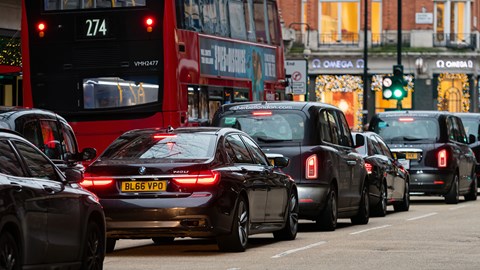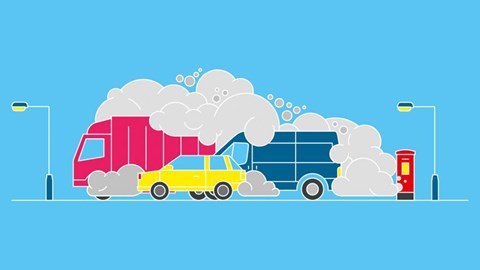► London Ultra Low Emission Zone expands
► ULEZ covers most of London from 29 August
► Road charging becomes a political hot potato
London’s Ultra Low Emission Zone (ULEZ) officially expanded to cover most of the capital on 29 August 2023 – bringing greater bills for countless motorists who rely on their cars to drive around London.
The enlarged ULEZ means that owners of older, more polluting models will incur a daily fee of £12.50 to drive within the zone, if they own a petrol car registered before September 2005 or a diesel car registered before September 2015.
In this article you’ll find everything you need to know about the new, larger emission zone, as well as how to check if your car is affected.

The ULEZ used to stretch as far as the North Circular (London’s inner ring road), but from 29 August 2023 it grew to cover almost every district of Greater London within the M25.
The expansion has become a political hot potato, after recent by-election results revealed the sentiment of Londoners, 80% of whom appear to be against the expansion.
How big is the new 2023 London ULEZ?
The new ULEZ extends to cover the area currently defined by the older Low Emissions Zone, taking in all London boroughs in the process.

It will be enforced by cameras, meaning it will be very easy to pick up a ticket if you stray into the ULEZ without realising it in an older, less compliant car. Read on to find out how to tell which EU emissions standard your car reaches.
Below is the sign that signals you’re approaching the ULEZ. You can also check if your route will take you through the zone using the official government London ULEZ postcode checker tool.

What time of day does the ULEZ operate?
Unlike the London Congestion Charge, there is no operating time for the ULEZ charge. If you enter at any time of the day or night, you’ll have to pay. After all, this is about stopping emissions, not controlling traffic at peak hours.
There’s more bad news. The charge is calculated per calendar day, so if you drive into the ULEZ area at 11pm at night and then drive out at 2.30am the following morning, you’ll have to pay the charge twice.
How much does the ULEZ cost and how do you pay?
If your car is affected, you’ll have to pay £12.50 per day. If you’re driving a larger vehicle (such as a lorry over 3.5 tonnes or a coach over 5 tonnes), it’ll cost £100 per day. Like the Congestion Charge, you can pay online and in advance.
Remember, the ULEZ charge is in addition to the London Congestion Charge. That means, if you’re driving through during the Congestion Charge’s operating time, you’ll have to pay both tolls.
What’s the fine if you don’t pay the ULEZ?
If you don’t pay the ULEZ charge you’ll be fined £180, although the penalty halves to £90 if you pay within 14 days.
How to check if you need to pay the ULEZ charge
ULEZ charges are calculated on the emissions a vehicle produces on its official certification, rather than the car’s age. The minimum permissible emission standards for petrol and diesel cars are listed below:
- Petrol: Euro 4
- Diesel: Euro 6
If your car fails to meet those standards, you must pay the charge, meaning the expanding ULEZ will have the biggest impact on older vehicles. According to TFL’s website, most petrol cars registered after 2005 will pass the Euro 4 protocols, although some cars from 2001 onwards may also be okay.

In terms of diesels, most vehicles registered after September 2015 will generally pass the ULEZ standard. If you’re unsure whether your vehicle is compliant, you can find out with TFL’s registration plate checker.
We’ve put together a list of cheap ULEZ compliant cars, if your current motor falls foul of the new ULEZ. Alternatively, you can also take a look at our constantly curated list of the best electric cars.
What about classic cars?
If you’re a classic car owner, there’s some better news. Cars built more than 40 years ago (i.e. those exempt from VED road tax) will also dodge the ULEZ charge. That means any cars made before 1 January 1983 qualifying for historic vehicle tax will be exempt from the new ULEZ charge. Be aware that historic vehicle tax doesn’t include commercial vehicles, though.
The expansion was originally announced in November 2022 and follows a previous expansion in October 2021, after the launch of the ULEZ in 2019. The new zone will mean improved air quality for 5 million more Londoners, according to the official documentation.
Projections estimate the expansion will save 27,000 tonnes of CO2 in outer London – nearly double what the original ULEZ achieved in its first year of operation. NOx and particulate emissions will also be reduced.
ULEZ camera vigilantes: the public fight back
The Met Police is launching a taskforce to prevent vandals damaging and stealing the cameras designed to police London’s newly expanded Ultra-Low Emission Zone.
Operation Eremon is investigating damage and thefts running at a dozen cameras a week, according to police records. A renegade group called Blade Runners has claimed responsibility for most of the attacks.
The ULEZ expanded to cover most of Greater London from 29 August after the High Court rejected a last-minute legal challenge. Mr Justice Swift threw out a bid by five Conservative councils to block the larger ULEZ.